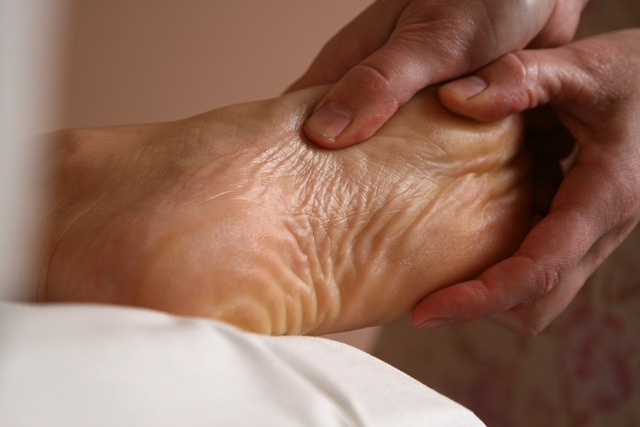Cold therapy, especially cold compression, is an effective treatment for tendon and ligament injuries common among athletes, reducing inflammation, pain, and swelling. Applied early in the recovery process, it accelerates healing through constricting blood vessels and stimulating endorphin release. Athletes in high-impact sports can benefit from this targeted approach, using tools like gel or water packs or advanced devices, to actively participate in their recovery and achieve faster healing. Cold therapy is a safe, accessible complement to traditional rehabilitation, with successful results documented by athletes and professionals alike.
In the realm of sports medicine, tendon and ligament injuries pose significant challenges for athletes. These micro-tears and sprains can sideline performance and lead to prolonged recovery periods. Thankfully, targeted cold therapy emerges as a game-changer in managing such injuries. This article delves into the science behind cold treatment, its effective application techniques using modern tools, and real-world success stories showcasing its ability to revolutionize sports injury care, particularly for tendon and ligament issues. Discover how cold therapy for sports injuries is transforming athletic recovery.
Understanding Tendon and Ligament Injuries: Their Causes and Impact on Athletes
Tendon and ligament injuries are common in athletes, affecting performance and overall well-being. These injuries occur when the soft tissues that connect muscles to bones become damaged due to sudden movements, overuse, or trauma. Athletes, particularly those involved in high-impact sports like running, jumping, and pivoting activities, are at a higher risk of developing these conditions.
Cold therapy for sports injuries has emerged as an effective treatment approach. Applying cold compression can significantly reduce inflammation, pain, and swelling associated with tendon and ligament sprains or strains. By limiting blood flow to the affected area, cold therapy provides immediate relief, enabling athletes to manage symptoms while promoting faster healing. This targeted approach is especially beneficial during the acute phase of injury, helping to prevent further damage and setting the stage for a successful recovery.
The Science Behind Cold Therapy: How It Helps in Healing Sports Injuries
Cold therapy, or cryotherapy, has gained significant attention in the sports medicine field as an effective treatment for tendon and ligament injuries. The science behind this method lies in its ability to reduce inflammation and pain by constricting blood vessels, which decreases metabolic waste and nutrient delivery to the affected area. This process creates a favorable environment for healing, as it minimizes swelling and promotes tissue repair.
When applied immediately after an injury or during acute stages of recovery, cold therapy can significantly alleviate symptoms. It helps in reducing muscle spasms and stiffness, enabling athletes to manage pain more effectively. Additionally, cryotherapy has been shown to accelerate the body’s natural healing process by stimulating the release of endorphins, our body’s natural painkillers, providing a double-pronged approach to managing sports injuries efficiently.
Targeted Application of Cold Treatments: Techniques and Tools for Effective Relief
The targeted application of cold treatments is a crucial aspect of managing tendon and ligament injuries, particularly in the realm of sports medicine. This therapy plays a vital role in reducing pain, minimizing swelling, and expediting recovery for athletes suffering from acute or chronic soft tissue damage. The key lies in employing specific techniques and utilizing specialized tools to ensure effective relief.
One popular technique involves the use of cold compression packs, which can be molded to fit various body parts, providing direct and targeted cold therapy for sports injuries. These packs are typically filled with gel or water and can be adjusted to different temperatures as needed. Additionally, cryotherapy devices, such as liquid nitrogen-based systems or specialized cold air machines, offer rapid and intense cooling for immediate pain relief. These advanced tools are often used in clinical settings but are increasingly accessible for at-home treatment, empowering athletes to take an active role in their recovery.
Success Stories: Real-World Examples of Cold Therapy's Efficacy in Treating Tendon and Ligament Injuries
Cold therapy has emerged as a game-changer in the realm of sports medicine, offering targeted treatments for tendon and ligament injuries. Success stories abound, with real-world examples highlighting its efficacy. Athletes and active individuals have reported significant improvements after incorporating cold therapy into their recovery routines.
One notable example is the successful treatment of tendinopathy, where cold compression has been shown to reduce inflammation, alleviate pain, and speed up healing processes. Additionally, cold therapy has proven beneficial for ligament sprains, helping to manage swelling and discomfort. These positive outcomes have led many sports professionals to advocate for cold therapy as a safe, effective, and accessible way to complement traditional rehabilitation methods in the fight against tendon and ligament injuries, enhancing athletes’ overall recovery experiences.
Cold therapy has emerged as a powerful tool in the sports medicine arsenal, offering targeted relief for tendon and ligament injuries. By understanding the science behind this method, athletes and professionals can harness its potential to speed up recovery times and enhance performance. The targeted application of cold treatments, coupled with innovative tools, ensures effectiveness and comfort. Real-world success stories highlight the transformative power of cold therapy, making it an indispensable approach in managing sports injuries. Incorporating this natural healing method into rehabilitation routines can be a game-changer for athletes seeking prompt and lasting relief.
